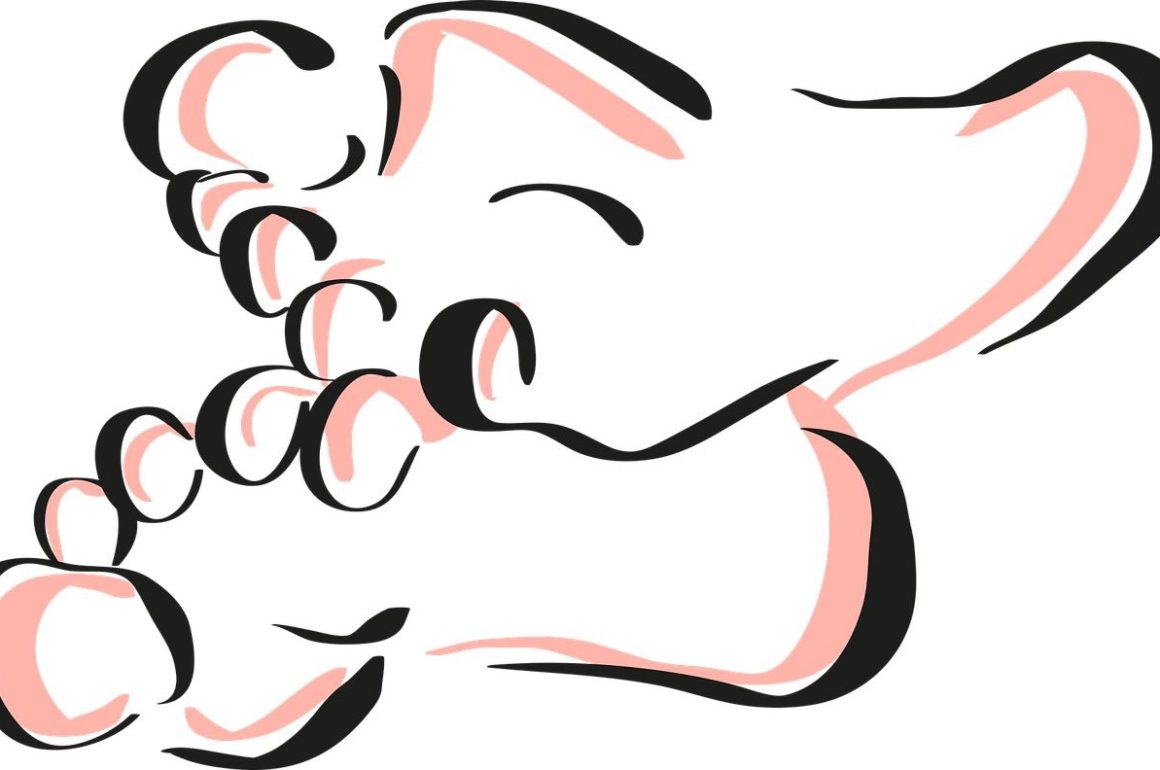
READING TIME: 4 MIN
Her feet were the first sign of trouble.
Gabriella was our first, but even without Lisa’s medical knowledge I knew something was wrong. My wife had just undergone a Cesarean birth, and thus she was a post-op patient herself, with nurses whisking around her bed in the OR. So it was me staring at her feet in terror.
One nurse said “clubfoot”. I remembered the word from novels as an unfixed ailment that left a character limping all his life. But this was my daughter, only minutes old.
They called her left foot a vertical talus. That was the first medical distinction I learned on a day of many: a clubfoot twists down and in, while a vertical talus turns up and out. Gabriella’s left foot lay parallel with her lower leg.
From her hospital bed, Lisa asked the Apgar scores and doctors and nurses discussed other symptoms I was too numb to process, but I couldn’t unsee those feet. I also couldn’t unsee her fragile eyes. Because her mom was getting treatment, I got to hold our daughter first. As soon as the nurse allowed it, I pulled her close.
But what was going on with her feet?
The pediatric orthopedist was one of the first doctors to examine Gabriella, and he reiterated the words, clubfoot and vertical talus, labels as different as her extremities themselves, the first as harsh as an insult, the other cloaked in medicalese.
He recommended casting her. In came the technician with a bowl of water and white strips like tape, dipping and laying and molding them into papier mâché booties from her knees to her toes. To my relief, the casts rendered her feet identical in shape.
It was a week later, a few hours before we recognized our daughter’s dehydration, that we removed the casts for the first time. (The orthopedic nurse had changed them a few days earlier, soaking them away layer by layer.) Now we did it ourselves, me holding her and whistling, you moistening and unwrapping the white layers like a gravelly Ace bandage. I watched with anticipation, hopeful that we would wind up with two feet that looked … well, more normal. But as I learned that day, normal had taken on a new definition in our house.
From the start, Gabriella’s feet were dissimilar. The right foot, the club, was thinner, the toes longer, inflexible, each curled atop the other, and pocked with bones that seemed out of place. One bone protruded badly, and I recall in the weeks that followed Lisa reminding me that the orthopedic surgeon had said we needed to monitor it to make sure it didn’t break through the skin. (I must have blotted out the memory of the doctor saying that originally.)
The left foot was different: flabbier, mottled purple like an uncooked sausage, more bendable. The toes were chubbier. And the bottom lay flat; I thought of the Peanuts characters.
They looked like the feet of two different unfortunate children. And yet from my early unease, those feet became a focal point of our love for her.
One day, with Gabriella lying on her back, Lisa raised her feet and squealed, “Gabriella’s got feeeeeties!”, following with a barrage of kisses, alternating in rapid-fire between her tiny soles. Our daughter found this hilarious. Soon it became a regular game for both of us.
When she was three months old, the orthopedist prescribed AFOs, orthotic devices of a hard plastic with Velcro straps that we used to press the feet into a corrected position. (Recently we found a plastic bag of her early orthotics, the tiniest with red Velcro and others changed to white.) We kept them on her at all times except during bathing, flexing exercises and bedtime.
Shortly before her second birthday, the orthopedist noted that the clubfoot was more awkward fitting into the AFO, and suggested we consider surgery. This was hardly her first – by now we had grappled with cataracts and worse – but this seemed more painful. The surgeon would have to break bones in her foot and reset them with a pin. Just the idea made my head swim.
By now the one constant was the anesthesiologist, a gentleman who lent us confidence. We also had faith in the orthopedic surgeon himself. But such a brutal procedure brought extra anxiety.
The waiting room had become familiar and we settled into our routine, reading and talking and looking at each other or off into space. This one took longer, but at last the surgeon emerged, still in his scrubs. The procedure had gone well.
Gabriella wore a cast from thighs to feet. She had been through so much, yet she smiled at us when we went to see her in recovery. Within days we took her home, and three weeks later they removed the pin – two inches long! – and changed her cast. I marveled at her resilience, still tiny but able to withstand such pain and disruption.
Even today, twenty years later, her feet retain their original profiles, the one with its curled toes and irregular bone structure, the other with the row of tiny purple veins and the flattened sole. But now, it’s their incongruity, their uniqueness, their imperfection, that makes them perfect in my eyes.








I know that was hard, Paul. You’ve now cleared that most difficult hurdle with intense love at your back.
Thank you, Betsy. We’ve gotten just a little bit stronger with each hurdle we’ve crossed. Paul